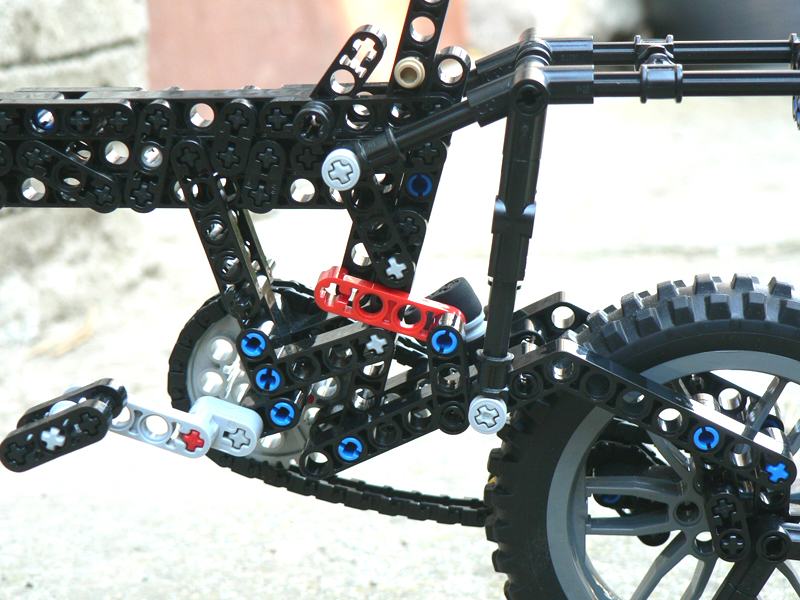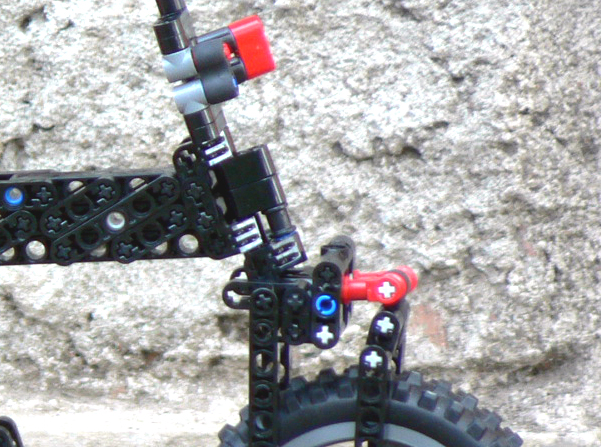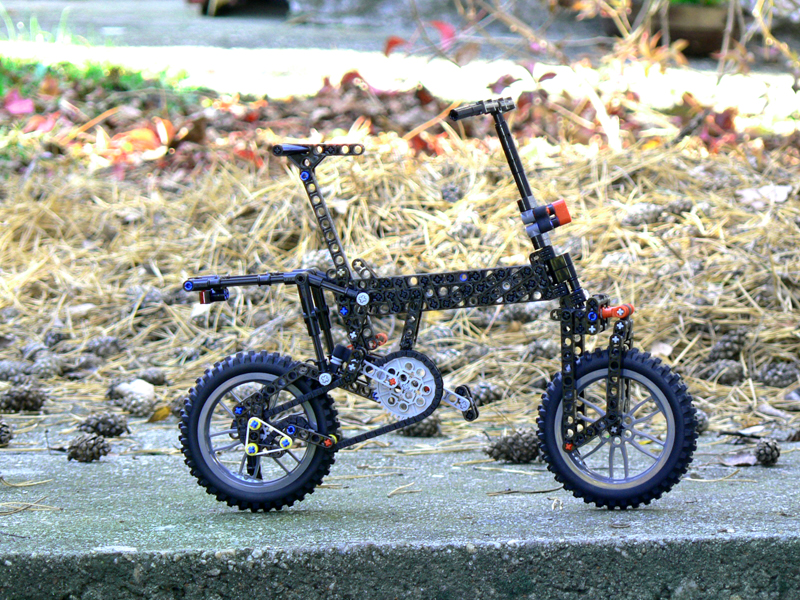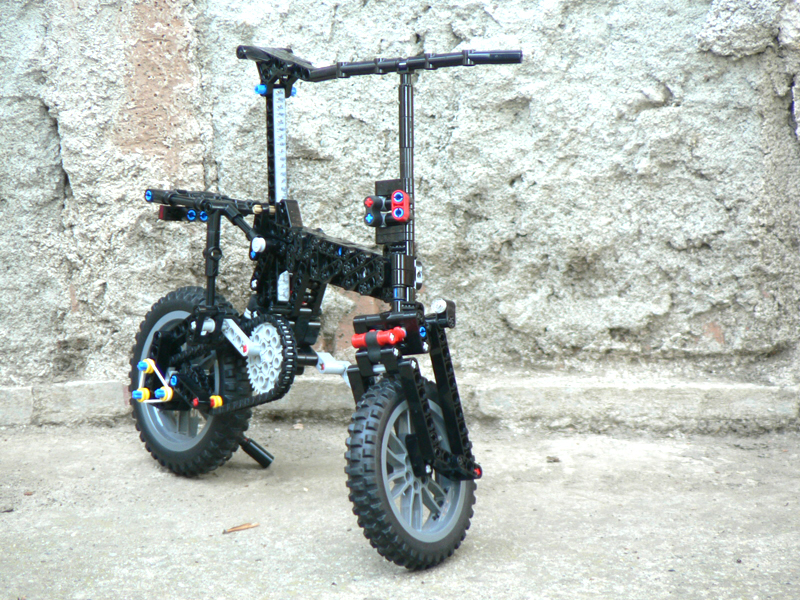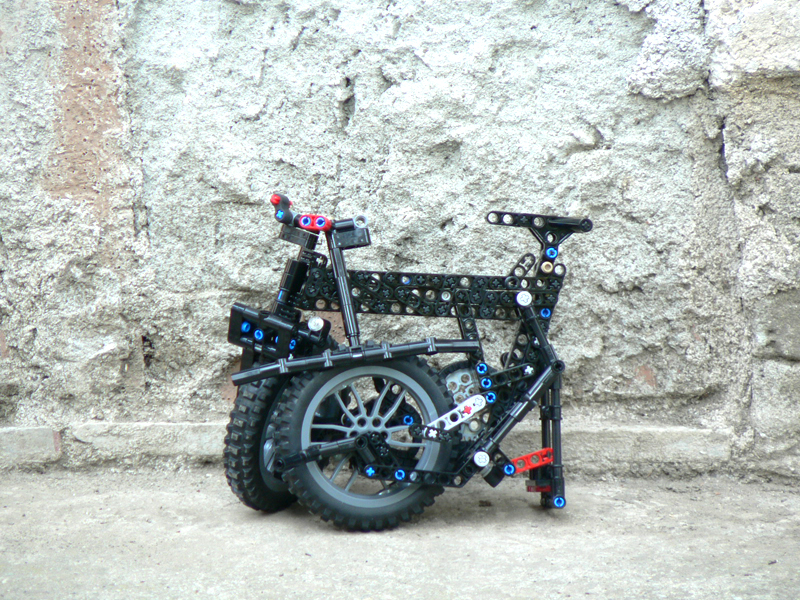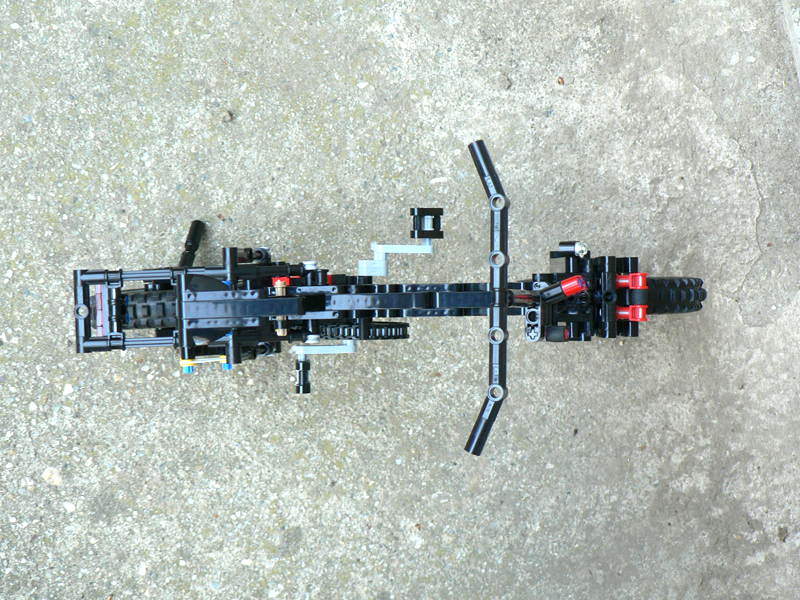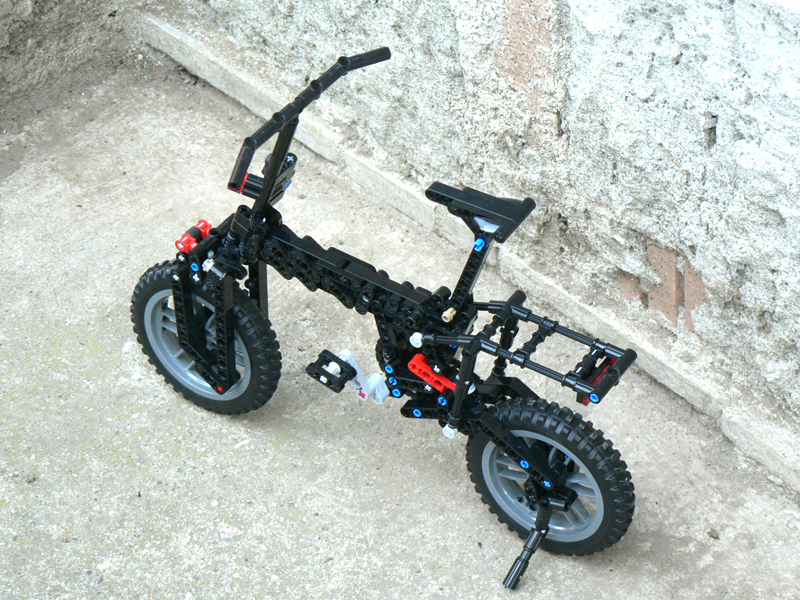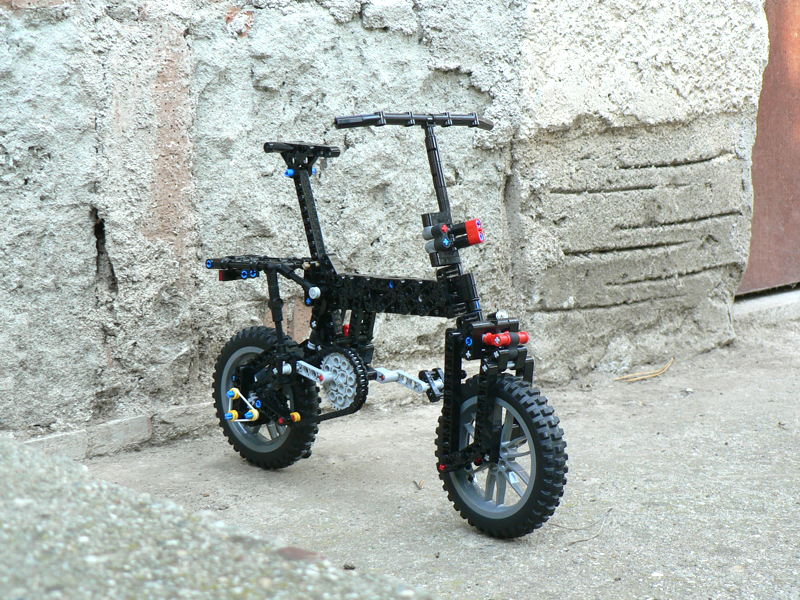Jump to video!
This was a long lasting project as it was always the model that was cast aside when other models were developed. One reason of this that this model used some illegal techniques (mostly stressing parts), the other that I knew it won't be strong and would only be a display model and I prefer playable models. The model was hard enough to make work and to look like the real bike so I didn't stress myself to use 100% legal techniques.
Features:
- Full suspension
- Chain drive with tensioner
- Kickstand
- Height adjustable seat
- Carrier that also folds along with the bike
- Realistic folding and unfolding, modeled as precisely as I could do with LEGO pieces.
Design process and challenges
The goal of the project was to build a bicycle model that has folding feature and looks like a real bike, sturdy enough to at least endure folding/unfolding and demonstrating its other features.Another goal was to implement suspension on both wheels which was a unique for the real bike when it was developed.
The first challenge was to get the shape right with all its angles. I figured out the technique rather quickly: the chassis was build with beams connected by diagonal half-beams.
This structure was quite flimsy by default, because friction pins for half-beams didn't exist. For this reason, I built the center frame with the center hub in a way that tension was applied on the structure. This solved the flimsiness issue but meant that I stepped out of the legal-technique zone.
The second and biggest challenge was the fork crown (the part that holds the front fork). Obviously it had to be able to rotate; front suspension had to be integrated; wheel locking was also an important feature, and it had to be sturdy enough to hold the fork and the weight of the whole model and also to withstand pushing the suspension. The fact that there is a slight angle between the fork and the steering pivot made this very complicated, even if I could use 22.5° connectors.
After many version and rebuilds, an acceptable solution was born.
This was not my best build (because of the illegal techniques and weak construction), but overall I am satisfied with the result as the model turned out quite similar to the original.
The model appeared on the official Facebook page of the manufacturer.
Note, that on the first picture below, the real bike is assembled with sport stem while the LEGO replica has comfort stem.
External links:

